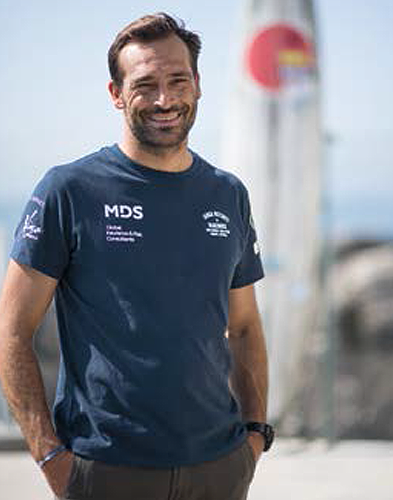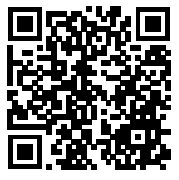FULLCOVER talked to João de Macedo, a renowned and charismatic Portuguese big wave surfer about his career, how Nazaré came to be the mecca for surfing and what it takes to control the staggering power of gigantic waves.

How it all began
The ocean has always been a part ofhis life. When João was a child, he would spend the summer at his grandmother'shouse at Praia Grande, Sintra. Here grew his passion for the ocean and thedrive to conquer his fears. "I developed a routine of trying to swim beyond thepoint where the waves broke, overcomingmy fear of going out into the water and pushing through the power of thewaves.”
He started bodyboarding at the ageof seven with a group of friends, whichincluded the future European and world bodyboarding champion, Gonçalo Faria.
The summer of 1989 marked a turningpoint in João's life and career. At age 12, he bought his first surfboard – a birthday present – at his uncle Pedro Martins Simões’sstore. As João began to explore surfing,he met one of his mentors, Bruce Hopping, head of an American surfing team whowas in Portugal through an exchangeprogramme. "Bruce gave me a lot of support and helpful tips. He taught me howimportant it is to persevere and nevergive up when you fall or come up against an obstacle. Failing, taking a fall,that's all part of the human learning process.” This personal and professionalrelationship would last for years.
Big-wave surfing
Nazaré beach made world headlineswhen Garrett McNamara achieved aGuinness world record. In November 2011, he surfed a 78ft. (23.8m) wave –that's as tall as a six-storey building!
Before Nazaré rose to worldwidefame, Praia Grande – with its exposure to strong Atlantic waves – had already proved a popular destination for surfers. PraiaGrande is known for its challenging ocean strength. "Even in summer, the seawould get angry and we had to adapt and face the waves. This helped to put usat ease with big waves, handle their churns and rolls, control our breathingand, naturally, overcome our fears.
We could then decide whether wereally wanted to persevere in this sport.”
It was at the famous Pipeline beachin Hawaii that João surfed his first big wave. "I have a vivid recollection ofthat day. I was with Gonçalo Faria and unlike everybody else, he wanted to goin the water. ‘The ocean's perfect, we have to go in!’ At that moment Irealized I had to overcome my fears and take a chance.”
Preparation
Although they’re portrayed asadrenaline junkies, big-wave surfers calculate risk.
Preparation is a critical successfactor and it takes time. "It takes a surfer at least 15 years to acquire theskills and poise to compete in the big-wave circuit. Learning never stops. Yougradually expose yourself to the ocean's demands and its ruthlessness.”
In addition to ocean training,surfers need to work out at the gym, focusing on cardio and muscle-building, tominimise the risk of injury.
"Apnoea training helps you cope withdifficult situations.” Learning how to deal with oxygen deprivation, "shuttingall systems down”, is crucial for a surfer trying to survive the ocean’smerciless power. In truth, something assimple as breathing needs work. "I practice yoga because it’s important to knowhow to breathe. It’s about being aware of, and in control of your breath, andincreasing your lung capacity. Meditation helps in this process and helps keepyour stress levels under control.”
A mental workout educates your brainso you can make counterintuitive decisions under duress. When you face theawesome power of a wave, you must remaincalm and fight survival instincts which would lead you to panic and breathe intoo much oxygen. "You can drown if you panic.” But that's not all. Going in the ocean under adverse conditionsis a leap of faith. You accept risk, relying on your preparation and ability toread the water.
João also practices Muay Thai (Thaiboxing) with master Nuno Neves. "It helps me keep that competitive edge.”Because it’s a martial art, it helps the cardiovascular system and stimulates aggression within controlled parameters.
"Take risks but choose them wisely”
"A surfer is a bit of a gambler. Youtake chances without fear of failure, although you do consider safety.”
After the death of big-wave surferSion Milosky in 2011, Danilo Couto and Kohl Christensen gathered a group offriends together to discuss the worrying lack of risk management in the sport.This was the start of the Big Wave Risk Assessment Group (www.bwrag.com). Itsgoal is to increase safety in big-wave surfing, sharing knowledge on first-aid methods,means of rescue, safety protocols, equipment and technology.
"These concerns are taken veryseriously. Only recently I joined the Big Wave Risk Assessment Group in Hawaiiand invited them to put a workshop together in the Azores, at RibeiraGrande, with Marco Medeiros, a localsurfer and firefighter, who has been in the EDP Mar Sem Fim (Endless Ocean)expeditions.1”
A way of life
"Maybe this sounds like a cliché,but I see surfing as a way of life. It's taught me to live life to the full,overcome my fears and limitations but also to respect nature. I’m currentlyworking on a documentary Way of Life2 which reflects my experience.”
Although not a veryfinancially-rewarding project, João’s desire to share his knowledge andexperience drove him to create the Surf Academia at Praia Grande, Sintra, in2000. You can almost say he followed in the footsteps of his father andgrandfather, both university professors."It is so gratifying to see the difference you can make to your students. After18 years and lots of ups and downs, it is still one of my life's passions. Youcan teach a lot using the ocean as your tool.”
In an attempt to promote his Method7 technique, developed at his surfing academy, João wrote the book How to Be a Surfer.
He was recently invited to give aspeech at the new campus of the Nova School of Business & Economics inCarcavelos, by the sea. "I had an opportunity to discuss the projects I’minvolved in and work with some of the university's researchers to learn how tosafeguard nature reserves and help attract more support. Fortunately, there area few organisations and companies, like MDS, that share my values. It would beimpossible to go on this adventure without them.”
When we ask João to give advice toanyone looking to follow in his footsteps, he says, "Don't give up or be afraidto fall. Be patient. It's a long trek.” These were some of the words of wisdomfrom his mentors: Bruce Hopping, Álvaro Pereira, his first influence, JoséSeabra, team manager and training buddy, and Mark Massara, surfer andwell-known lawyer with an environmental law practice.
João defines big-wave surfing as a"Sport of self-discovery. In Mavericks, I had a bad fall, but I remember thesatisfaction I felt that I’d powered through a difficult situation. I wasscared but I managed to maintain self-control. I realised big-wave surfing wasmy world. Injuries are opportunities to reflect on what you're doing and how toimprove your preparation. When you make a good recovery, you come back evenstronger.”
____________________
MDS is surfer João de Macedo'sinsurance partner and main sponsor. This partnership stems from sharedvalues with the athlete, as RicardoPinto dos Santos, MDS CEO, confirms:
"This partnership with João reflects our business principles – to be competitive and achieve excellence in everything we do. It is all the more special because of our shared belief in theneed for risk management, which entails knowledge, preparation and hard work.”

1. A project focused on the discovery of big-wave surfing, self-awarenessand a passion for the ocean and surf culture. Covering unconquered oceans, itreveals a new frontier for big-wave surfing in Portugal.
2. A short film fromPortuguese director, Blaze Runner, on João de Macedo. Filmed over six months,it covers the best-known, fundamental basics of big-wave surfing. Available atwww.vimeo.com/247792599


